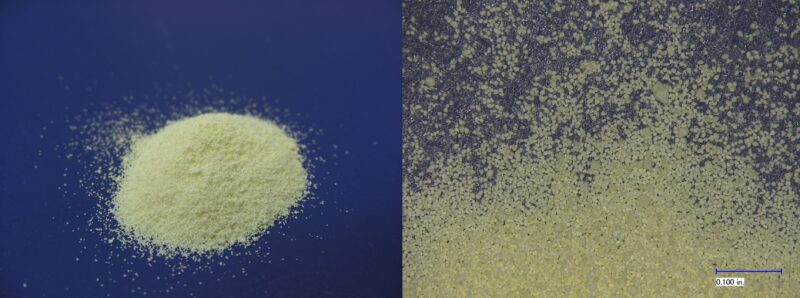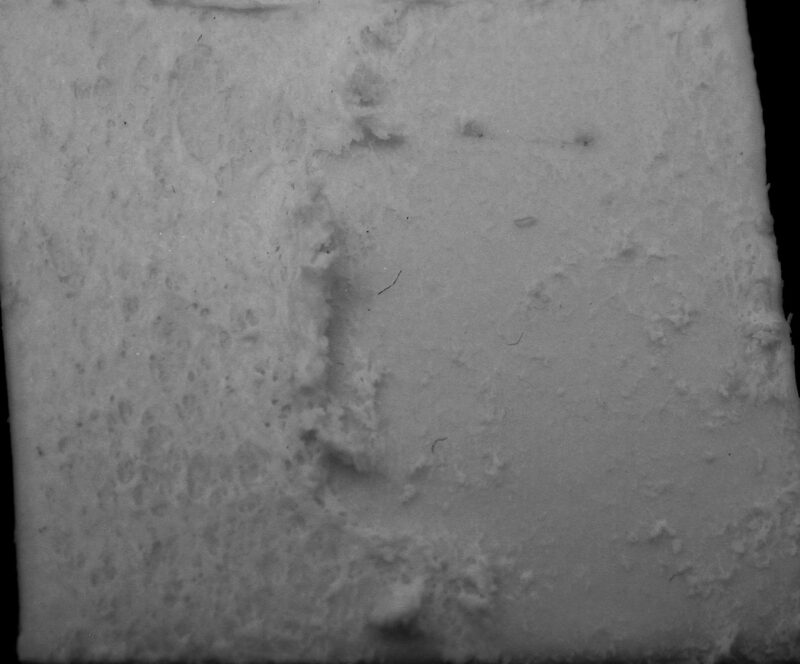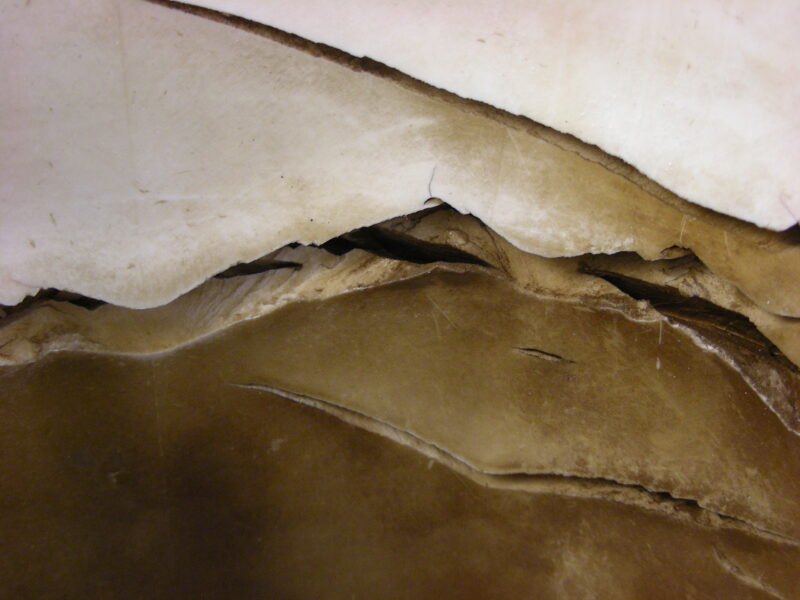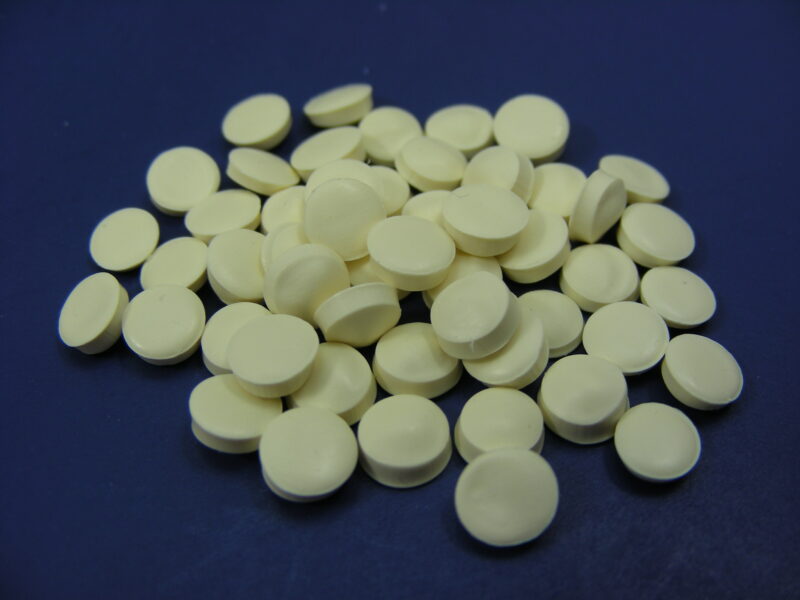As previously discussed in Part 1, the mechanical performance of PVC is primarily controlled by the use of numerous additives. The same is true for optimizing the processing characteristics. Additionally, many additives perform more than one function. For example, plasticizers will increase flexibility of the material for a given application, but they will also reduce the viscosity and lower the glass transition temperature (Tg) creating a softer polymer easier to process. Plasticizers aid in processing by acting as extenders and lubricants improving the material flow behavior. For this reason, it is more difficult to process unplasticized PVC (PVC-U) which will be our topic of interest.
In order to properly process PVC-U, processing aids are an absolute necessity. Processing without critical additives such as heat stabilizers and lubricants would likely result in degraded polymer for every single part since it would degrade at nearly the same temperature needed to process the material. Processing aids are also necessary to increase elasticity and the ability of the melt to stretch. This is critical because it will control the ability of the material to properly shear and break down the PVC particles to increase the degree of fusion.
Degree of fusion is not a common term for many plastics, and the reason is that PVC synthesis is unique when compared to most other polymers. PVC is insoluble in vinyl chloride−the monomer used to synthesize it. Therefore, as PVC is synthesized, it bundles in particulates that separate from the monomer solution resulting in a powdery end polymerization product, Figure 1. There are benefits to this unique reaction, as well as disadvantages. One benefit is that monomer removal during polymerization happens naturally resulting in very low monomer content products that are ideal for food and medical applications. Unfortunately, this powdery material can be very difficult to process which explains the need for processing aids. However, if the processing conditions are not optimal, PVC particulates can easily bundle and cause poor material fusion, even with adequate processing aids.

Figure 1 – PVC powder.

Figure 2 – Material lifting due to poor fusion.
Degree of fusion can therefore be described as the ability of these particulates to break down and rejoin as a solid structure. Since PVC is a polymer, rejoining of these particulates needs to happen at the molecular level from proper molecular entanglement. As with other polymers, temperature and shear are the critical variables necessary for the polymeric molecules to properly interact and entangle. Poor fusion in PVC will result in brittle characteristics and low end-performance.
There are a variety of methods for evaluating degree of fusion from processed PVC parts. Two qualitative techniques are the acetone immersion test (AT) and the dichloromethane test (DCMT). The first follows ASTM D2152, while the second follows the ISO 9852 standard. These tests focus on looking at the surface of the material when exposed to the respective chemicals and only provide a qualitative evaluation of the material’s degree of fusion based on visual signs of material lifting or removal, Figure 2. A more quantitative technique is DSC-fusion testing which follows ISO 18373-2. This technique provides the benefit of quantifying the degree of fusion and has shown to be extremely valuable for many failure analysis investigations. The DSC analysis not only provides information on the degree of fusion, but can also provide a reference of melt temperature value attained during processing. Figure 3, shows a pipe with a low degree of fusion due to poor processing that severely cracked during normal use.

Figure 3 – PVC pipe that failed during use due to poor fusion.
When considering fusion, it makes sense that a higher temperature and shear experienced by the material should result in better properties due to a more complete fusion. On the other hand, scholars have presented data suggesting that certain properties such as impact strength show a maxima at a specific degree of fusion that can be below the highest achievable fusion. However, with PVC’s tight processing window, more data is needed to properly account for the relationship between degree of fusion and degradation effects during processing.
PVC resin will easily degrade at processing temperatures. This makes processing of PVC a difficult task. Typical melt temperature ranges for injection molding grade PVC resins are 160-220 °C. In general, injection and extrusion processes try to maintain the melt temperature below 200 °C to prevent excessive degradation. PVC can even begin to degrade under 160 °C. Therefore, at processing temperatures, the only thing preventing PVC from rapidly degrading are the heat stabilizers and additives that are partially being consumed.

Figure 4 – PVC pellets.
Today, PVC material can be effectively processed through advancements in equipment design and resin formulation. For example, optimal injection molding of PVC has only been achieved after improvements in thermal stability and processability of the melt by use of additives. Furthermore, a prior compounding-pelletizing process is necessary to form the powdery PVC resin into injection moldable pellets, Figure 4. During the compounding and pelletizing process, it is critical that the material forms into pellets while preventing a high degree of fusion. This will guarantee that the compounding process will not interfere with the ability of the pellets to melt and flow when injection molded.
Even with the current advancements in formulation, processing equipment designers need to consider the poor temperature resistance of the material. Critical variables taken into account are temperature, residence time, and flow restrictions that can increase shear and create stagnation areas. For example, injection molding runner systems and gates should be approximately 20-40% larger in cross-sectional area than the conventional design used for other rigid amorphous polymers like polystyrene to minimize shear heating. Additionally, sharp corners should be avoided. Comparable to injection molding, similar conditions are desired in extrusion processes. The counter-rotating twin screw extruder is the equipment of choice for extruding rigid PVC pipes. This type of extruder is currently one of the best for plasticizing powdered raw materials. When compared to a single screw extruder, the twin screw provides unique benefits for such a heat-sensitive material. These extruders provide a high throughput with lower screw speeds while still achieving good heating, mixing performance, and reduced degradation. Dies used for PVC pipe are also uniquely designed with specific spider mandrels with flow channels that allow proper melt separation and rejoin, while avoiding melt stagnation and thermal and mechanical inconsistencies.
Parts with thin geometries can lead to high shear and degradation making them difficult to manufacture. However, thick PVC parts such as large extruded pipes can also be extremely difficult to optimally process. Most PVC fusion problems we observe are generally related to parts with thick cross-sections where there can be broad temperature differentials and lower shear in the material during processing. Whichever the process method, the low processing window of PVC resin can make optimal manufacturing a difficult task. Therefore, it is very important to consider and evaluate the true melt temperature and shear conditions that the PVC material might experience during processing. This will not only prevent fusion issues, but can also avoid failures at material rejoin areas such as meld and weld lines. Additionally, being able to characterize the final properties of the material, any degradation effects, and the degree of fusion can provide better insight of the long-term performance of the product.
See the other installments in this series on PVC:
